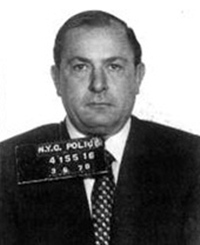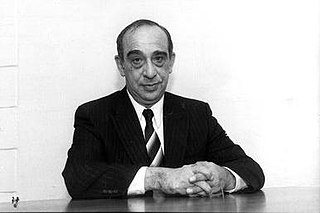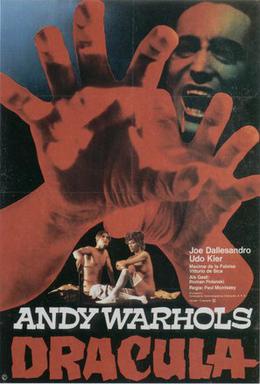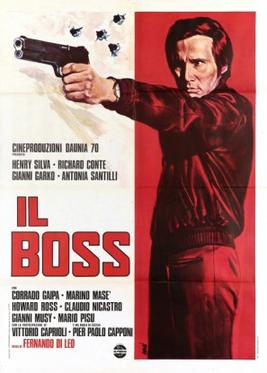
Carlo Gambino was a Sicilian-born American crime boss who was the leader and namesake of the Gambino crime family of New York City. Following the Apalachin Meeting in 1957, and the imprisonment of Vito Genovese in 1959, Gambino took over the Commission of the American Mafia and played a powerful role in organized crime until his death from a heart attack in 1976. During a criminal career that spanned over fifty years, Gambino served only twenty-two months in prison for a tax evasion charge in 1937.

Joseph Gallo, also known as "Crazy Joe", was an Italian-American mobster and Caporegime of the Colombo crime family of New York City.

Joseph Anthony Colombo Sr. was the boss of the Colombo crime family, one of the Five Families of the American Mafia in New York City.

Giuseppe "Joe" Profaci was an Italian-American Cosa Nostra boss who was the founder of what became the Colombo crime family of New York City. Established in 1928, this was the last of the Five Families to be organized. He was the family's boss for over three decades.

Carmine John Persico Jr., also known as "Junior", "The Snake" and "Immortal", was an American mobster and the longtime boss of the Colombo crime family in New York City from 1973 until his death in 2019. He had been serving 32 years in federal prison from 1987 until his death on March 7, 2019.
Consigliere is a position within the leadership structure of the Sicilian, Calabrian, and Italian-American Mafia. The word was popularized in English by the novel The Godfather (1969) and its film adaptation. In the novel, a consigliere is an advisor or counselor to the boss, with the additional responsibility of representing the boss in important meetings both within the boss's crime family and with other crime families.
The Colombo crime family is an Italian American Mafia crime family and is the youngest of the "Five Families" that dominate organized crime activities in New York City within the criminal organization known as the American Mafia. It was during Lucky Luciano's organization of the American Mafia after the Castellammarese War, following the assassinations of "Joe the Boss" Masseria and Salvatore Maranzano, that the gang run by Joseph Profaci became recognized as the Profaci crime family.

Joseph Magliocco, also known as "Joe Malayak" and "Joe Evil Eye", was an Italian-born New York mobster and the boss of the Profaci crime family from 1962 to 1963. In 1963, Magliocco participated in an audacious attempt with Joseph Bonnano to kill other family bosses and take over the Mafia Commission. The attempt failed, and, while his life was spared, he was forced into retirement. Soon after, he died of a heart attack on December 28, 1963.

Blood for Dracula is a 1974 horror film written and directed by Paul Morrissey and starring Udo Kier, Joe Dallesandro, Maxime McKendry, Stefania Casini, Arno Juerging, and Vittorio de Sica. Upon its initial 1974 release in West Germany and the United States, Blood for Dracula was released as Andy Warhol's Dracula.

Poliziotteschi constitute a subgenre of crime and action films that emerged in Italy in the late 1960s and reached the height of their popularity in the 1970s. They are also known as polizieschi all'italiana, Euro-crime, Italo-crime, spaghetti crime films, or simply Italian crime films. Influenced by both 1970s French crime films and gritty 1960s and 1970s American cop films and vigilante films, poliziotteschi films were made amidst an atmosphere of socio-political turmoil in Italy known as Years of Lead and increasing Italian crime rates. The films generally featured graphic and brutal violence, organized crime, car chases, vigilantism, heists, gunfights, and corruption up to the highest levels. The protagonists were generally tough working class loners, willing to act outside a corrupt or overly bureaucratic system.
Albert "Kid Blast" Gallo, Jr. is an American mobster of the Genovese crime family.
Frank "Punchy" Illiano was a Brooklyn Captain with the Genovese crime family. During the 1960s and 1970s, he served as a top lieutenant to the Gallo brothers in their two wars with the Colombo crime family leadership.
Kenny "Kenji" Gallo is a Japanese-Italian American gangster-turned-informant, a former director and producer of adult films, and an author.

Il Boss is a poliziottesco-noir film written and directed by Fernando Di Leo in 1973. It is the final part of Di Leo's Milieu Trilogy, also consisting of Milano calibro 9 and La mala ordina, both released in 1972.

Three Tough Guys is a 1974 crime-action film directed by Duccio Tessari. It stars Lino Ventura, Fred Williamson and Isaac Hayes, who also composed the soundtrack. It is a coproduction between United States, Italy and France. The film was shot in Chicago.

Cry of a Prostitute is a 1974 Italian gangster film directed by Andrea Bianchi.

The Black Hand (The Birth of the Mafia) (Italian: La mano nera) is a 1973 Italian crime film written and directed by Antonio Racioppi and starring Lionel Stander, Rosanna Fratello and Michele Placido.
A Sixth Family is a crime family or criminal organization, usually an Italian-American or Italian-Canadian crime group, that has become powerful or notable enough to rise to a level comparable to that of the Five Families of the New York City Italian-American Mafia. A criminal organization deemed a "Sixth Family" may rival the Five Families or, alternatively, may work closely enough with the Five Families that it appears to be a peer or near coequal of the families.
Lawrence "Larry" Gallo was born circa 1927. He became a member of the Profaci Family of La Cosa Nostra. His younger brothers Joey and Albert would follow him into organized crime. Larry was the leader of the Gallo Crew from President Street, Brooklyn. Hostilities broke out between the Gallo Crew and the rest of the Profaci Family. These hostilities became known as the Gallo-Profaci War. In an effort to peacefully resolve the war, a sit-down was scheduled at the Sahara Lounge in Flatbush, Brooklyn on August 20, 1961. Larry's trusted friend and bodyguard Joe "Jelly" Gioielli was not at this important meeting. An attempt was made on Larry's life at the meeting, but a police officer walked in. The assassins fled shooting Officer Melvin Blei in the face. Both Officer Blei and Larry survived. In accord with mob tradition, Larry would not name the attempted assassins. Elements of Larry's life were depicted in The Godfather films. The attempted strangulation of the fictional Frank Pentangeli resembles the attempt on Larry's life. The "sleep with the fishes" scene also parallels Larry's real life only the victim was his friend Joe "Jelly" Gioielli instead of the fictional Luca Brasi. Jelly boarded a boat in Sheepshead Bay and was never seen again. Larry and the Gallo Crew had a good side. They rescued a mom and five children from a burning tenement, and in 1966 they helped the City Youth Board by intervening with Italian youth gangs. Larry struggled with cancer for many years. Cosa Nostra does not offer a health plan. Ultimately, Larry lost his battle with cancer. He passed away at Nassau Hospital on May 17, 1968.











